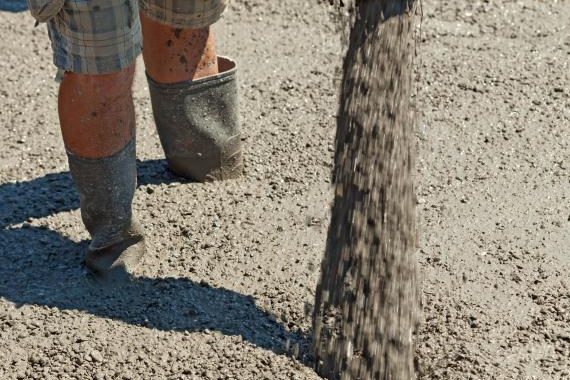The concrete pump is a device used to transport and pour concrete. It is especially essential on sites that are difficult to access.
The Different Types of Concrete Pumps
There are 3 types of concrete pumps:
The stationary concrete pump: it is a small device that can be towed by a vehicle, on the construction site or on the public road. It is placed on wheels or caterpillar tracks with :
-a loading hopper that holds the concrete
-a pump unit that facilitates and ensures the transport of the concrete
-a piping system.
The pump truck: also called “self-propelled pump”. It is strictly used to pour concrete and not to transport it. It ensures an important pouring (a flow of 200 m³ per hour). Its boom can measure up to 60 meters.
The pump mixer: also called “mixo pump”. It is a truck-mixer with a pumping arm. With a 21 m boom, it can provide a flow of 20 m³ to 60 m³. It is particularly suitable for small construction sites such as compression slabs, terraces, swimming pool decks, etc.
Concrete Pumping Systems or Technologies
There are 2 pumping systems:
The rotor pump: pumping is ensured by crushing a flexible hose, carried out by the movement of rollers driven by its motor. This system is suitable for special concretes such as self-placing concrete, liquid screed, or light concretes.
The piston pump: is made up of two cylinders, one of which sucks in the concrete and the other discharges it. This pump is powerful enough to allow pumping. It is generally suitable for fibrous or high-density concrete.
How a Concrete Pump Works
Each model of concrete pump operates in two different ways:
Two-piston hydraulic pumps: these are the most powerful models. They can provide a high flow rate of ready-mixed concrete. Before being discharged, the concrete passes through a cylinder with the help of a piston.
Concrete pumps with peristaltic movement: they are equipped with a flexible diaphragm and a rotor. As the rotor rotates, the diaphragm compresses and begins to move the concrete in the direction of the system’s rotation.
To maintain and promote their proper operation, it is essential to follow all instructions given by the manufacturer and the concrete pumping supplier.
The Use and Precautions of a Concrete Pump
A concrete pump must be used when the construction site is difficult to access. Indeed, it allows at least 3 types of pouring: without direct access (terrace at the back of a house or slab), at a distance (galleries or tunnels), and height (home or multi-story building).
To get the most out of the concrete pump, it is essential to take these few precautions into account:
- make sure that the site is accessible so that the truck can access it without a hitch;
- inform the authorities and draw up a request for the commencement of work, particularly for work near power lines;
- provide a pumping system adapted to the type of concrete used;
- provide bags of cement to enable the pump to start up;
- provide a place to wash the equipment after work.



















